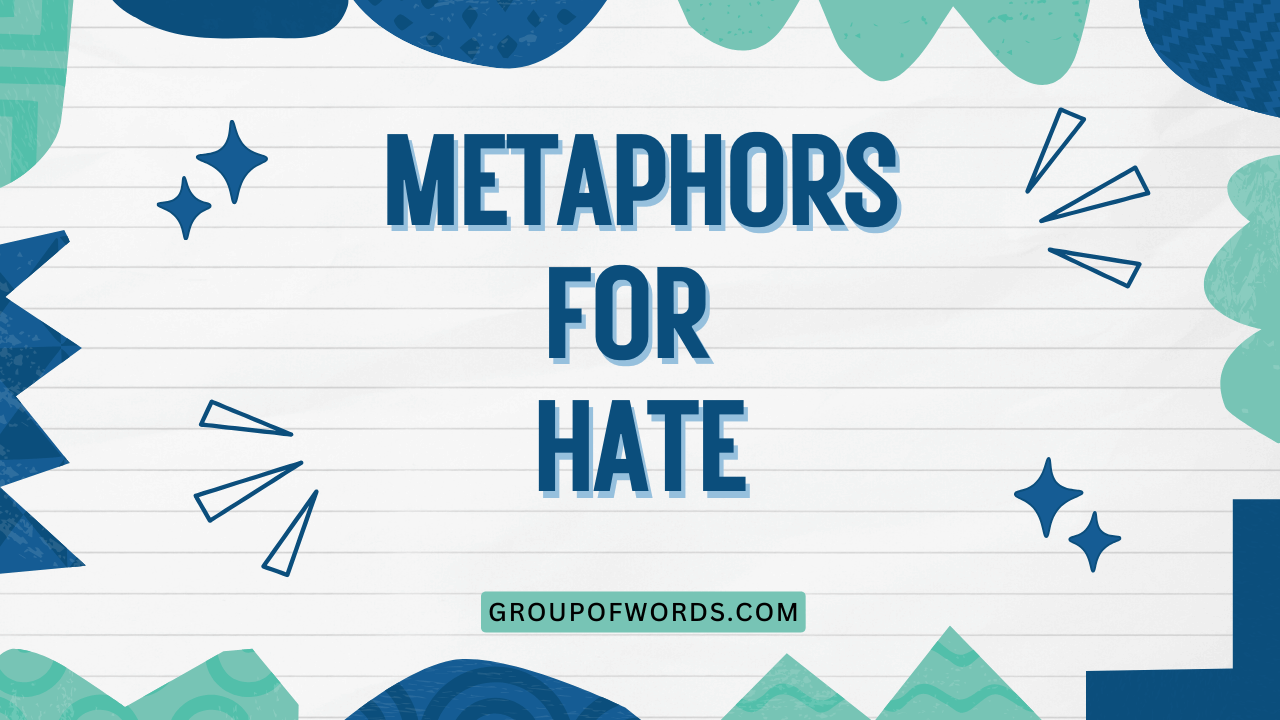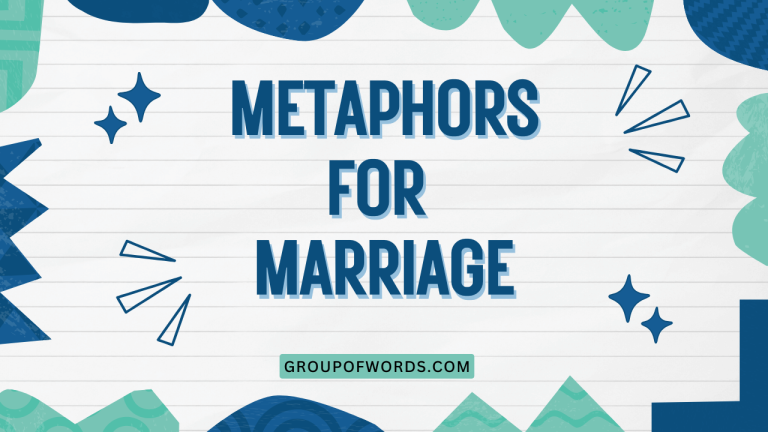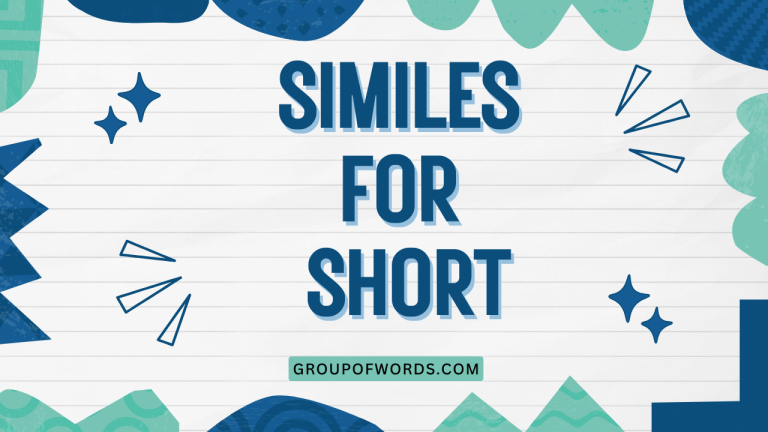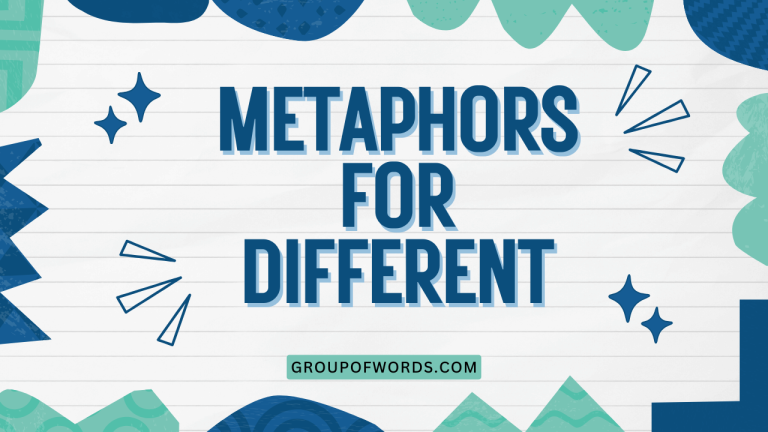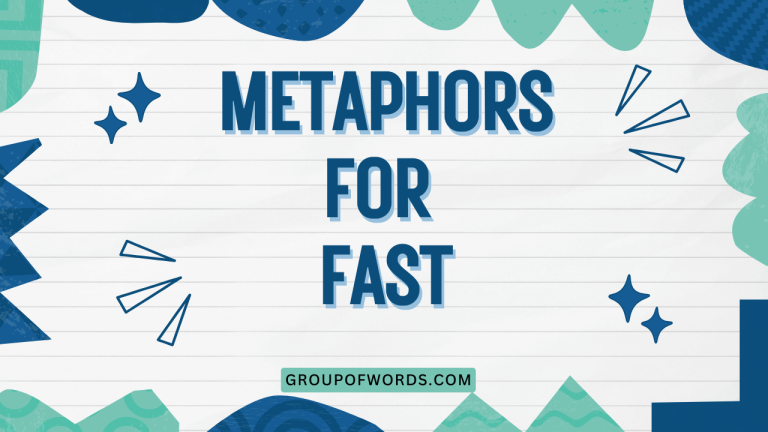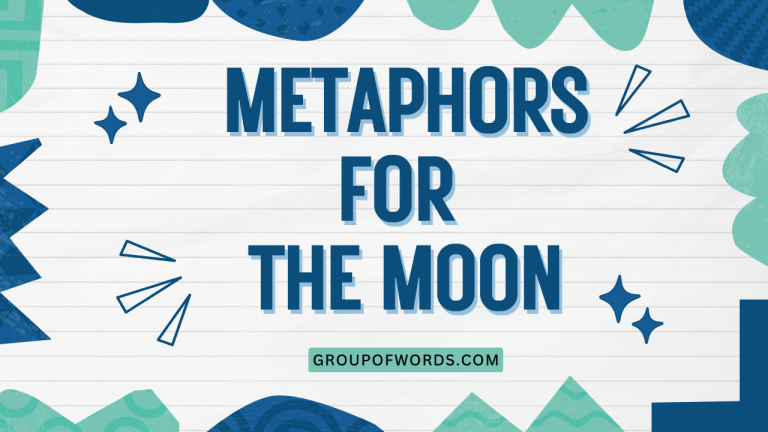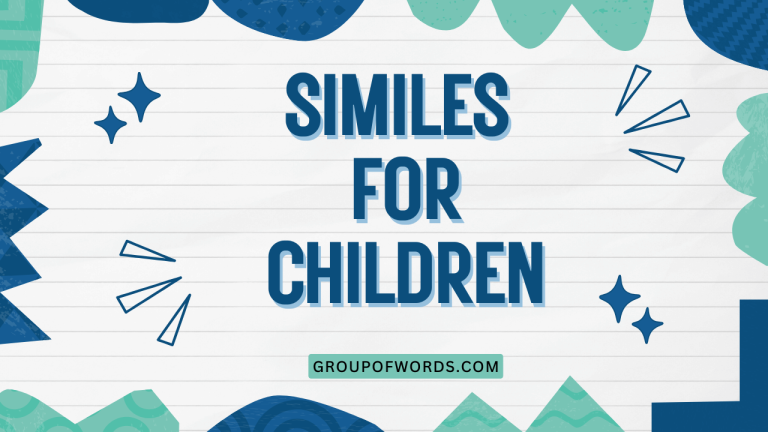Metaphors for Hate: Understanding Figurative Language
Understanding how hate is expressed through metaphors is crucial for interpreting literature, analyzing rhetoric, and navigating everyday conversations. Metaphors are powerful linguistic tools that shape our understanding of abstract concepts, and they are frequently used to express and perpetuate hateful ideologies.
This article delves into the various types of metaphors used to convey hate, providing a structural breakdown, numerous examples, usage rules, and practice exercises. This guide is designed for English language learners, educators, and anyone interested in developing a deeper understanding of the subtle yet pervasive ways hate manifests in language.
By exploring the metaphors used to represent hate, we can become more aware of the underlying biases and assumptions that fuel prejudice and discrimination. This awareness is essential for promoting tolerance, empathy, and effective communication across diverse communities.
This article will help you identify, analyze, and critically evaluate hateful metaphors, empowering you to challenge and dismantle harmful stereotypes.
Table of Contents
- Definition of Metaphors for Hate
- Structural Breakdown of Hateful Metaphors
- Types and Categories of Metaphors for Hate
- Examples of Metaphors for Hate
- Usage Rules for Interpreting Metaphors of Hate
- Common Mistakes in Identifying Hateful Metaphors
- Practice Exercises
- Advanced Topics in Metaphorical Analysis
- Frequently Asked Questions
- Conclusion
Definition of Metaphors for Hate
A metaphor is a figure of speech that directly compares two unrelated things, asserting that one *is* the other to highlight a shared quality or characteristic. When applied to the concept of hate, metaphors provide a powerful way to express negative feelings, prejudices, and discriminatory attitudes.
Metaphors for hate go beyond simple dislike; they often involve dehumanization, demonization, and the justification of violence or oppression against targeted groups.
In the context of hate speech, metaphors can be particularly insidious because they operate on a subconscious level, shaping perceptions and reinforcing negative stereotypes. Unlike explicit statements of hatred, metaphorical language can be more subtle and therefore more easily accepted or overlooked.
This makes it crucial to develop a critical awareness of the metaphors used to express hate and their potential impact.
Metaphors for hate can be classified based on the source domain (the concept used to describe hate) and the target domain (the group or individual being targeted). For example, comparing a group of people to animals uses the animal kingdom as the source domain and the targeted group as the target domain.
Understanding this distinction is key to analyzing the underlying message and intent of the metaphor.
Structural Breakdown of Hateful Metaphors
The structure of a hateful metaphor typically involves two key elements: the tenor and the vehicle. The tenor is the subject of the metaphor – the thing being described (often the targeted group or individual). The vehicle is the object or concept used to describe the tenor (e.g., an animal, a disease, an object). The connection between the tenor and vehicle is the ground – the shared characteristic or attribute that the metaphor highlights.
For instance, in the metaphor “They are rats infesting our city,” the tenor is “they” (the targeted group), the vehicle is “rats,” and the ground is the perceived characteristic of being unwanted, destructive, and disease-carrying. By understanding these structural elements, we can dissect the meaning and impact of hateful metaphors more effectively.
The effectiveness of a hateful metaphor lies in its ability to evoke strong emotional responses and reinforce existing biases. By associating the targeted group with negative imagery, these metaphors can create a sense of fear, disgust, or contempt, ultimately justifying discrimination and violence.
Types and Categories of Metaphors for Hate
Metaphors for hate can be categorized based on the type of imagery or concept used to describe the targeted group. Here are some common categories:
Animalistic Metaphors
Animalistic metaphors compare individuals or groups to animals, often to suggest that they are uncivilized, dangerous, or inferior. These metaphors exploit negative stereotypes associated with certain animals to dehumanize the targeted group.
Disease Metaphors
Disease metaphors portray the targeted group as a disease or infection that threatens the health and well-being of society. This type of metaphor often evokes fear and disgust, leading to calls for isolation or eradication of the perceived “disease.”
Dehumanizing Metaphors
Dehumanizing metaphors strip individuals or groups of their humanity by comparing them to objects, machines, or abstract concepts. This type of metaphor denies the targeted group their individuality and worth, making it easier to justify violence or oppression against them.
Objectification Metaphors
Objectification metaphors treat individuals as objects or commodities, reducing them to their physical attributes or perceived usefulness. This type of metaphor is particularly common in sexist and racist rhetoric, where individuals are valued only for their appearance or labor.
Natural Disaster Metaphors
Natural disaster metaphors compare the targeted group to floods, earthquakes, or other natural disasters, suggesting that they are an uncontrollable and destructive force that threatens to overwhelm society. This type of metaphor often justifies drastic measures to contain or eliminate the perceived threat.
Contaminant Metaphors
Contaminant metaphors depict the targeted group as a source of pollution or impurity that threatens to contaminate the purity and integrity of society. This type of metaphor often targets minority groups, immigrants, or anyone perceived as “different” or “other.”
Criminality Metaphors
Criminality metaphors associate the targeted group with crime, lawlessness, and moral depravity. This type of metaphor often relies on stereotypes and generalizations to portray the targeted group as inherently criminal or dangerous, justifying discriminatory policies and practices.
Examples of Metaphors for Hate
The following tables provide examples of metaphors for hate, categorized by type. These examples illustrate the diverse ways in which hateful ideologies can be expressed through figurative language.
Table 1: Animalistic Metaphors for Hate
This table showcases how targeted groups are compared to animals to evoke negative emotions and dehumanization. The examples highlight the use of animalistic traits to suggest inferiority or threat.
| Metaphor | Target | Implication |
|---|---|---|
| They are like rabid dogs, foaming at the mouth with hate. | Political opponents | Uncontrolled aggression and irrationality |
| They breed like rats, overrunning our resources. | Immigrant population | Excessive population growth and resource depletion |
| He is a snake in the grass, waiting to strike. | A rival | Deceitfulness and treachery |
| They are vultures, preying on the weak. | Corporations | Exploitation and greed |
| She is a cat, playing with her victims before devouring them. | A manipulative person | Cruelty and calculated harm |
| Those people are just sheep, blindly following their leader. | Cult members | Lack of independent thought and susceptibility to manipulation |
| He’s a pig, always gorging himself on power and wealth. | A corrupt politician | Greed, selfishness, and excess |
| They are like cockroaches, impossible to get rid of. | A marginalized community | Unwanted presence and resilience |
| She is a hawk, always watching for an opportunity to exploit. | A predatory investor | Aggressiveness and opportunism |
| Those protesters are just a pack of wolves, howling for blood. | Political demonstrators | Aggression, violence, and mob mentality |
| He’s a leech, sucking the life out of the company. | An unproductive employee | Dependence and drain on resources |
| They are like flies, buzzing around and irritating everyone. | Annoying people | Annoyance and insignificance |
| She is a spider, weaving a web of deceit. | A manipulative person | Deception and entrapment |
| Those criminals are like wild beasts, untamed and dangerous. | Convicted felons | Lack of control and inherent danger |
| He’s a dog, always chasing after attention and approval. | A needy person | Subservience and dependence |
| They are like ants, mindlessly working for the queen. | Corporate employees | Lack of individuality and conformity |
| She is a lioness, fiercely protecting her cubs. | A protective mother | Aggressiveness in defense of loved ones |
| Those bullies are just hyenas, ganging up on the weak. | School bullies | Cowardice and opportunistic cruelty |
| He’s a parrot, just repeating what he hears without thinking. | Someone lacking original thought | Lack of intelligence and originality |
| They are like worms, crawling through the dirt and feeding on decay. | Scavengers | Disgusting behavior and association with filth |
| He is a shark, always circling for his next victim. | Predatory businessman | Ruthlessness and exploitation |
| They are like mosquitoes, constantly buzzing and draining your energy. | Annoying individuals | Constant irritation and resource depletion |
| She is a fox, always outsmarting everyone else. | A cunning strategist | Deception and intelligence |
| Those protestors are like locusts, devouring everything in their path. | Destructive protestors | Destruction and insatiable appetite |
| He’s a donkey, stubborn and unwilling to learn. | A stubborn person | Lack of intelligence and resistance to change |
Table 2: Disease Metaphors for Hate
This table provides examples of how groups or ideologies are depicted as diseases to instill fear and justify their isolation or elimination. The metaphors compare the targeted group to a contagious illness.
| Metaphor | Target | Implication |
|---|---|---|
| Their ideas are a virus, infecting the minds of our youth. | Opposing political views | Contagious spread and mental corruption |
| Corruption is a cancer, slowly eating away at our society. | Government malfeasance | Gradual destruction and pervasive damage |
| Hate is a plague, spreading through our communities. | Prejudice and discrimination | Rapid dissemination and widespread harm |
| The problem is a festering wound, needing to be addressed immediately. | Social injustice | Growing severity and urgency for resolution |
| Their presence is a toxic mold, contaminating our pure environment. | Immigrant community | Pollution and degradation of standards |
| Radicalism is a disease, weakening the fabric of our nation. | Extreme political ideologies | Erosion of stability and societal strength |
| Poverty is a sickness, afflicting the most vulnerable among us. | Economic disparity | Debilitation and suffering among the poor |
| Bigotry is an infection, poisoning our hearts and minds. | Prejudiced attitudes | Emotional and mental corruption |
| Their influence is a parasitic infection, slowly draining our resources. | Foreign powers | Exploitation and depletion of resources |
| Ignorance is a chronic illness, hindering progress and understanding. | Lack of education | Impediment to development and knowledge |
| The system is riddled with sclerosis, unable to adapt to change. | Outdated bureaucracy | Inflexibility and resistance to innovation |
| Their agenda is a malignant tumor, growing unchecked and threatening to destroy everything. | Political opponents | Uncontrolled growth and destructive potential |
| Their lies are a contagious rash, spreading misinformation and panic. | Propaganda | Rapid dissemination and public anxiety |
| Greed is a debilitating disease, consuming their souls. | Materialism | Moral decay and spiritual emptiness |
| Their actions are a symptom of a deeper malaise, reflecting societal decay. | Social issues | Underlying problems and systemic failure |
| Their hatred is a festering boil, oozing with venom and resentment. | Deep-seated anger | Intense bitterness and emotional toxicity |
| Their policies are a harmful toxin, poisoning our environment and endangering our health. | Environmental regulations | Pollution and public health risks |
| Their ideas are a mind-altering drug, enslaving their followers and distorting reality. | Cult beliefs | Mental manipulation and detachment from reality |
| Their prejudice is a genetic defect, passed down through generations and perpetuating injustice. | Historical biases | Inherited inequality and continued discrimination |
| Their propaganda is a hallucinogen, creating illusions and distorting perception. | Misinformation campaigns | Distorted reality and manipulation of public opinion |
| Their corruption is gangrene, spreading rapidly and necessitating amputation. | Widespread fraud | Extensive damage and drastic measures |
| Their rhetoric is a sedative, lulling the masses into complacency and inaction. | Political speeches | Suppression of dissent and public apathy |
| Their actions are a virus, replicating and mutating to evade detection and resistance. | Malicious activities | Continuous adaptation and difficulty in combating |
| Their influence is a slow-acting poison, gradually undermining our institutions and values. | Subversive forces | Progressive weakening and societal erosion |
| Their ideology is a psychological disorder, manifesting in irrational behavior and destructive tendencies. | Extremist beliefs | Mental instability and harmful actions |
Table 3: Dehumanizing Metaphors for Hate
This table shows examples of metaphors that strip individuals or groups of their humanity, often by comparing them to objects or abstract concepts. This facilitates a lack of empathy and justification for violence.
| Metaphor | Target | Implication |
|---|---|---|
| They are cogs in a machine, easily replaceable and expendable. | Factory workers | Lack of individuality and value |
| They are just numbers on a spreadsheet, devoid of human emotion. | Statistics | Loss of identity and quantification |
| They are a blank slate, easily manipulated and controlled. | Vulnerable individuals | Susceptibility to influence and exploitation |
| They are walking corpses, devoid of life and spirit. | Depressed individuals | Loss of vitality and emotional numbness |
| They are shadows, lurking in the darkness and threatening our safety. | Marginalized groups | Invisibility and potential danger |
| They are robots, programmed to obey without question. | Military personnel | Lack of independent thought and obedience |
| They are commodities, bought and sold for profit. | Human trafficking victims | Objectification and exploitation |
| They are garbage, polluting our streets and degrading our environment. | Homeless individuals | Worthlessness and contamination |
| They are like drones, mindlessly following orders and lacking empathy. | Bureaucrats | Lack of compassion and automation |
| They are just tools, used and discarded when no longer needed. | Contract employees | Temporary usefulness and disposability |
| They are a burden, weighing down our society and draining our resources. | Elderly population | Economic strain and dependency |
| They are like mannequins, empty and soulless. | Superficial individuals | Lack of depth and genuine emotion |
| They are invisible, ignored and forgotten by society. | Impoverished communities | Neglect and marginalization |
| They are just pawns, sacrificed for the greater good. | Soldiers | Expendability and manipulation |
| They are a stain, defiling our purity and integrity. | Minority groups | Contamination and degradation |
| They are like puppets, controlled by unseen forces and lacking free will. | Conspiracy theorists | Manipulation and absence of autonomy |
| They are a void, lacking substance and meaning. | Existentially lost individuals | Emptiness and lack of purpose |
| They are just bricks in a wall, contributing to a faceless structure. | Conformists | Loss of individuality and conformity |
| They are a cipher, representing nothing and meaning nothing. | Insignificant individuals | Worthlessness and lack of impact |
| They are like statues, cold and unfeeling. | Emotionally detached individuals | Lack of empathy and emotion |
| They are just data points, analyzed and categorized without regard for their humanity. | Research subjects | Objectification and disregard for personal feelings |
| They are a blank canvas, waiting to be filled with our ideas and beliefs. | Children | Susceptibility to indoctrination and manipulation |
| They are like automatons, performing repetitive tasks without thought or creativity. | Assembly line workers | Lack of autonomy and intellectual stimulation |
| They are just consumers, defined by their spending habits and material possessions. | Modern society | Materialism and lack of deeper values |
| They are a resource, to be exploited for our benefit and then discarded. | Migrant workers | Exploitation and disposability |
Table 4: Natural Disaster Metaphors for Hate
This table provides examples of comparing targeted groups to natural disasters, portraying them as uncontrollable and destructive forces.
| Metaphor | Target | Implication |
|---|---|---|
| They are a flood, threatening to engulf our way of life. | Immigrant communities | Overwhelming presence and cultural disruption |
| Their ideas are an earthquake, shaking the foundations of our society. | Radical ideologies | Destabilization and upheaval |
| Their anger is a volcano, ready to erupt and destroy everything in its path. | Oppressed groups | Suppressed rage and potential for violence |
| They are a wildfire, spreading uncontrollably and consuming everything in its wake. | Social unrest | Rapid dissemination and widespread destruction |
| Their influence is a tsunami, overwhelming our defenses and leaving devastation behind. | Foreign powers | Overpowering force and long-lasting damage |
| Their presence is a hurricane, wreaking havoc and disrupting our lives. | Refugee populations | Disruption and displacement |
| Their actions are an avalanche, burying us under a mountain of problems. | Political corruption | Overwhelming issues and inability to cope |
| Their words are a storm, stirring up chaos and confusion. | Propaganda | Disruption and misinformation |
| Their policies are a drought, withering our economy and leaving us barren. | Economic mismanagement | Depletion of resources and stagnation |
| Their hatred is a blizzard, blinding us and leaving us lost in the cold. | Prejudice | Confusion and emotional isolation |
| Their presence is a plague of locusts, devouring our resources and leaving us with nothing. | Exploitative corporations | Depletion of resources and widespread poverty |
| Their actions are a mudslide, dragging us down into the depths of despair. | Moral decay | Descent into hopelessness and negativity |
Table 5: Contaminant Metaphors for Hate
This table demonstrates how targeted groups are portrayed as contaminants, threatening the purity and integrity of society.
| Metaphor | Target | Implication |
|---|---|---|
| They are a stain on our society, defiling our traditions and values. | Minority cultures | Degradation and corruption of standards |
| Their presence is a poison, contaminating our pure environment. | Immigrant communities | Pollution and degradation of standards |
| Their ideas are toxic waste, polluting the minds of our youth. | Alternative lifestyles | Mental corruption and degradation |
| Their influence is a disease, infecting our institutions and weakening our resolve. | Foreign ideologies | Erosion of stability and societal strength |
| They are like sewage, overflowing and spreading filth throughout our city. | Homeless populations | Unwanted presence and contamination |
| Their actions are tarnishing our reputation, leaving us disgraced and ashamed. | Scandals | Damage to public image and reputation |
| Their presence is like a cancer, growing and spreading throughout our society. | Criminal organizations | Uncontrolled growth and destructive potential |
| Their words are like venom, poisoning our minds and turning us against each other. | Propaganda | Mental corruption and division |
Usage Rules for Interpreting Metaphors of Hate
Interpreting metaphors of hate requires careful attention to context, intent, and the potential impact of the language used. Here are some key rules to consider:
- Identify the Tenor and Vehicle: Determine what is being described (tenor) and what it is being compared to (vehicle).
- Analyze the Ground: Identify the shared characteristic or attribute that connects the tenor and vehicle. What qualities are being emphasized?
- Consider the Context: Pay attention to the social, political, and historical context in which the metaphor is used. How does the context shape the meaning and impact of the metaphor?
- Assess the Intent: Determine the speaker’s or writer’s intent. Are they trying to dehumanize, demonize, or justify violence against the targeted group?
- Evaluate the Impact: Consider the potential impact of the metaphor on the audience. Does it reinforce negative stereotypes, promote prejudice, or incite hatred?
- Challenge the Metaphor: Actively challenge the underlying assumptions and biases of the metaphor. Offer alternative interpretations or counter-narratives that promote empathy and understanding.
Understanding the speaker’s intent is crucial. Are they using hyperbole for emphasis or are they genuinely expressing hateful sentiments?
Context is key.
Common Mistakes in Identifying Hateful Metaphors
Several common mistakes can hinder the accurate identification and interpretation of hateful metaphors:
- Taking Metaphors Literally: Failing to recognize that the language is figurative and interpreting it in a literal sense.
- Overlooking Subtlety: Missing the subtle cues and nuances that indicate a metaphorical comparison.
- Ignoring Context: Failing to consider the social, political, and historical context in which the metaphor is used.
- Assuming Innocence: Giving the speaker or writer the benefit of the doubt and assuming that they did not intend to express hate.
- Dismissing Impact: Underestimating the potential impact of hateful metaphors on the audience.
Here are some examples of common mistakes:
| Incorrect | Correct | Explanation |
|---|---|---|
| “They are animals!” (literal interpretation) | “They are animals!” (dehumanizing metaphor) | Recognizing the statement as a comparison meant to degrade. |
| Ignoring the context of a statement about “cleaning up the city.” | Understanding “cleaning up the city” as a metaphor for ethnic cleansing in a specific historical context. | Understanding historical and social context is vital to proper interpretation. |
| Dismissing a seemingly innocent comparison as harmless exaggeration. | Recognizing that even subtle comparisons can reinforce negative stereotypes. | Understanding that metaphors can be subtle but still harmful. |
Practice Exercises
Test your understanding of metaphors for hate with the following exercises.
Exercise 1: Identifying Metaphors
Identify the metaphors in the following sentences and explain their intended meaning.
| Question | Answer |
|---|---|
| 1. “Their culture is a virus infecting our nation.” | Metaphor: Culture as a virus. Meaning: Suggests that the culture is harmful and contagious. |
| 2. “He is a snake, ready to strike at any moment.” | Metaphor: He is a snake. Meaning: Implies deceitfulness and danger. |
| 3. “They are a flood of immigrants overwhelming our resources.” | Metaphor: Immigrants as a flood. Meaning: Suggests an unmanageable and destructive influx. |
| 4. “Her words were poison, seeping into my mind.” | Metaphor: Words as poison. Meaning: Implies that the words are harmful and corrupting. |
| 5. “They are like rats, infesting our city.” | Metaphor: They are like rats. Meaning: Suggests they are unwanted, dirty and a nuisance. |
| 6. “His hate is a fire, consuming everything in its path.” | Metaphor: Hate as a fire. Meaning: Implies destruction and uncontrollability. |
| 7. “They are machines, programmed to obey.” | Metaphor: They are machines. Meaning: Suggests a lack of free will and individuality. |
| 8. “Their lies are a web, trapping the innocent.” | Metaphor: Lies as a web. Meaning: Implies deceit and entrapment. |
| 9. “They are a burden, weighing down our society.” | Metaphor: They are a burden. Meaning: Suggests they are an economic and social drain. |
| 10. “Their influence is a shadow, lurking in the darkness.” | Metaphor: Influence as a shadow. Meaning: Implies a hidden and threatening presence. |
Exercise 2: Identifying Types of Metaphors
Identify the type of metaphor used in each sentence (animalistic, disease, dehumanizing, etc.).
| Question | Answer |
|---|---|
| 1. “They are vultures, preying on the weak.” | Type: Animalistic |
| 2. “Their ideas are a virus, infecting our minds.” | Type: Disease |
| 3. “They are just cogs in a machine.” | Type: Dehumanizing |
| 4. “They are a flood, overwhelming our city.” | Type: Natural Disaster |
| 5. “They are a stain on our society.” | Type: Contaminant |
| 6. “He is a wolf in sheep’s clothing.” | Type: Animalistic |
| 7. “Their presence is a toxic mold.” | Type: Contaminant/Disease |
| 8. “They are just numbers on a spreadsheet.” | Type: Dehumanizing |
| 9. “Their anger is a volcano.” | Type: Natural Disaster |
| 10. “They are cockroaches, impossible to get rid of.” | Type: Animalistic |
Exercise 3: Analyzing Metaphors
For each sentence, identify the tenor, vehicle, and ground of the metaphor.
| Question | Tenor | Vehicle | Ground |
|---|---|---|---|
| 1. “Their culture is a virus infecting our nation.” | Their culture | Virus | Harmful, spreading |
| 2. “He is a snake, ready to strike at any moment.” | He | Snake | Deceitful, dangerous |
| 3. “They are a flood of immigrants overwhelming our resources.” | Immigrants | Flood | Overwhelming, destructive |
| 4. “Her words were poison, seeping into my mind.” | Her words | Poison | Harmful, corrupting |
| 5. “They are like rats, infesting our city.” | They | Rats | Unwanted, dirty, numerous |
| 6. “His hate is a fire, consuming everything in its path.” | His hate | Fire | Destructive, uncontrollable |
| 7. “They are machines, programmed to obey.” | They | Machines | Lacking free will, obedient |
| 8. “Their lies are a web, trapping the innocent.” | Their lies | Web | Deceitful, trapping |
| 9. “They are a burden, weighing down our society.” | They | Burden | Heavy, draining |
| 10. “Their influence is a shadow, lurking in the darkness.” | Their influence | Shadow | Hidden, threatening |
Advanced Topics in Metaphorical Analysis
For advanced learners, exploring the following topics can provide a deeper understanding of metaphorical analysis:
- Conceptual Metaphor Theory: Explore how metaphors shape our understanding of abstract concepts and influence our reasoning.
- Critical Discourse Analysis: Analyze how metaphors are used to construct and reinforce power relations in society.
- Cognitive Linguistics: Investigate the cognitive processes involved in understanding and processing metaphorical language.
- Rhetorical Analysis: Examine how metaphors are used to persuade and influence audiences in political speeches, advertisements, and other forms of communication.
These advanced topics require a solid foundation in linguistics, rhetoric, and critical thinking. They offer valuable insights into the complex ways in which language shapes our perceptions and influences our behavior.
Frequently Asked Questions
Here are some
common questions about metaphors for hate:
What is the difference between a metaphor and a simile?
A metaphor directly equates two things (e.g., “He is a snake”), while a simile uses “like” or “as” to make a comparison (e.g., “He is like a snake”). Both are figures of speech, but metaphors are more assertive in their comparison.
Why are metaphors for hate so powerful?
Metaphors operate on a subconscious level, shaping perceptions and reinforcing existing biases. They can evoke strong emotional responses and justify discrimination or violence against targeted groups.
How can I challenge metaphors for hate?
By identifying the underlying assumptions and biases of the metaphor, offering alternative interpretations, and promoting empathy and understanding.
Are all metaphors inherently harmful?
No, metaphors are not inherently harmful. However, when they are used to dehumanize, demonize, or justify violence against targeted groups, they become tools of hate.
How can I improve my ability to identify metaphors for hate?
Practice analyzing language critically, paying attention to context, intent, and the potential impact of the words used. Familiarize yourself with common types of metaphors and their underlying meanings.
What role does context play in interpreting hateful metaphors?
Context is crucial. The same phrase can be harmless in one situation and deeply offensive in another.
Historical, social, and cultural factors all contribute to the meaning and impact of a metaphor.
Can metaphors for hate be unintentional?
Yes, sometimes individuals use metaphors without fully realizing their hateful implications. However, even unintentional use can perpetuate harmful stereotypes and contribute to a climate of prejudice.
It is important to be mindful of the language we use and its potential impact.
How do metaphors for hate differ across cultures?
Metaphors are often culturally specific, drawing on shared experiences and beliefs. What is considered a hateful metaphor in one culture may not be in another.
Understanding cultural context is essential for accurate interpretation.
What are some strategies for responding to someone who uses a hateful metaphor?
You can challenge the metaphor directly by pointing out its harmful implications, offering an alternative perspective, or appealing to the speaker’s sense of empathy. It’s also important to consider your safety and well-being when deciding how to respond.
How can educators address the use of hateful metaphors in the classroom?
Educators can create a safe and inclusive learning environment where students feel comfortable discussing sensitive topics. They can teach students how to identify and analyze metaphors for hate, and encourage them to challenge harmful language and stereotypes.
Conclusion
Metaphors for hate are powerful linguistic tools that shape our understanding of abstract concepts and influence our reasoning. By understanding the structure, types, and usage rules of these metaphors, we can become more aware of the underlying biases and assumptions that fuel prejudice and discrimination.
This awareness is essential for promoting tolerance, empathy, and effective communication across diverse communities. By critically evaluating hateful metaphors, we can challenge and dismantle harmful stereotypes, fostering a more inclusive and equitable society.
Continued education and vigilance are key to combating the insidious nature of hateful language and promoting a more just and compassionate world.
